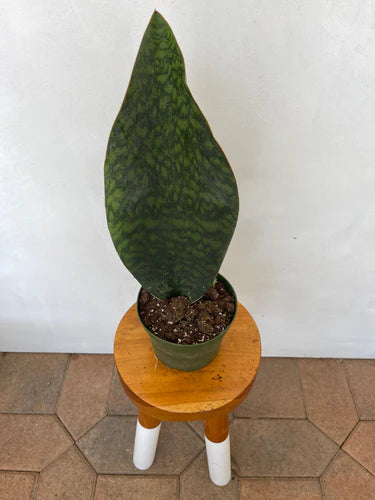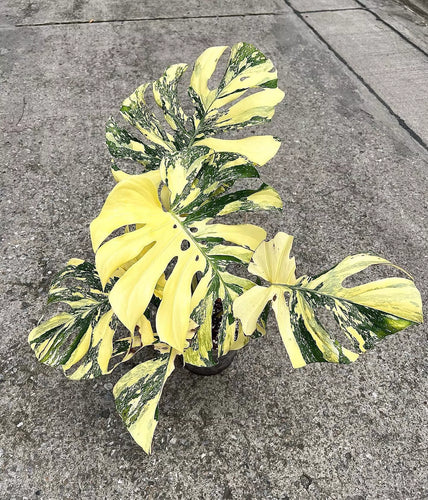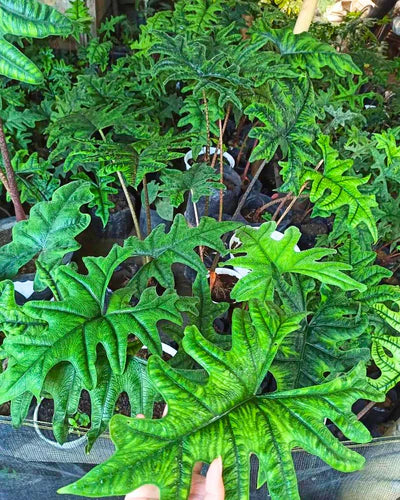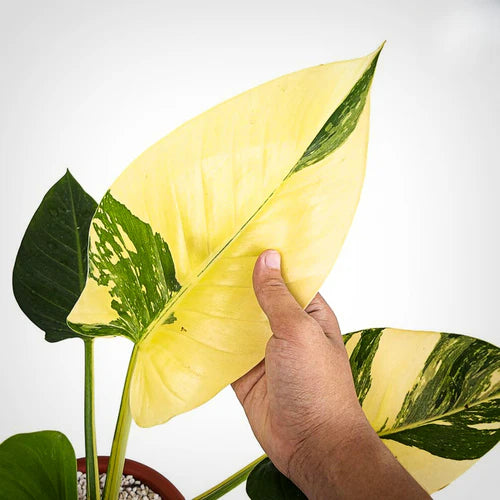Sansevieria Masoniana: Mastering the Care of Your Whale Fin Snake Plant

Sansevieria Masoniana, popularly known as the Whale Fin Snake Plant, is a unique and captivating addition to any indoor plant collection. With its large, paddle-like leaves, this plant is a true conversation starter. Although it's a rarer find compared to other Sansevieria varieties, its care and propagation are relatively straightforward. In this comprehensive guide, we'll delve deep into the world of Sansevieria Masoniana, offering expert tips on care, propagation, and troubleshooting common issues.
Table of Contents
- Introduction to Sansevieria Masoniana
- Light Requirements
- Watering Guidelines
- Soil and Potting
- Essential Tools for Repotting
- Fertilization
- Propagation Methods
- Toxicity and Safety
- Troubleshooting Common Issues
- Where to Buy
- Conclusion
Introduction to Sansevieria Masoniana
- Scientific Name: Sansevieria Masoniana
- Common Names: Whale Fin Snake Plant, Mason's Congo
- Origin: Congo, Africa
- Unique Features: Large, singular leaves resembling a whale's fin
Being an active member of the houseplant community on Instagram has its perks, such as the ability to exchange rare plants like the Sansevieria Masoniana with fellow enthusiasts. After receiving a healthy specimen from a friend in Florida, I potted it in a terra cotta container and placed it in an optimal location for growth.
Light Requirements for Sansevieria Masoniana
- Ideal Exposure: Eastern or Western windows
- Tolerance: Low light, but prefers bright, indirect light
- Direct Sunlight: Can tolerate some direct sunlight
For those who don't have the luxury of natural light, you can also use grow lights specifically designed for indoor plants to supplement your Sansevieria Masoniana's light needs.
Watering Guidelines for Your Whale Fin Snake Plant
- Frequency: When the soil is almost completely dry
- Method: Thorough watering until excess drains out
- Special Care: Empty saucer to prevent root rot
Watering is crucial for any plant, and the Whale Fin Snake Plant is no exception. Always water thoroughly until you see excess water drain out of the pot. Make sure to empty the saucer to prevent root rot. Allow the soil to dry out almost completely before the next watering. These plants are drought-tolerant but prefer a consistent watering schedule for optimal growth.
Soil and Potting Options
- Soil Mix: Two parts succulent/cactus mix, one part pumice
- Potting: Terra cotta pots recommended
- Drainage: Essential
Sansevieria Masoniana thrives in well-draining soil. A mix of two parts succulent/cactus potting mix and one part pumice is ideal. If pumice is not available, perlite can be a suitable alternative. Some growers also add organic activated charcoal to the mix to improve drainage and reduce odors.
Essential Tools for Repotting
When it comes to repotting your Sansevieria Masoniana, having the right tools can make the process much smoother. A Mini Garden Hand Transplanting Succulent Tools set is perfect for this task, and it even comes with a repotting mat to keep your workspace clean.
Fertilization Tips
- Type of Fertilizer: Low-nitrogen, such as Schultz 2-7-7 Cactus Plus
- Frequency: During the growing season
During the growing season, use a low-nitrogen fertilizer like Schultz 2-7-7 Cactus Plus. However, remember that fertilization is not a substitute for proper care. Always prioritize proper lighting and watering conditions.
Propagation Methods
- Division: Fastest method, separating at the roots
- Water Propagation: Leaf cutting in water
- Soil Propagation: Leaf cutting in soil
Sansevieria Masoniana is a slow grower, so patience is key when propagating. You can propagate through division, water propagation, or soil propagation. Division is the quickest method and involves separating the plant at the roots. Water propagation involves cutting a leaf and placing it in water until roots form. Soil propagation is similar but involves planting the leaf cutting directly into soil.
Toxicity and Safety
- Pets: Toxic to cats and dogs
- Toxic Elements: Saponins
- Source: ASPCA
Be cautious if you have pets; Sansevieria Masoniana is toxic to cats and dogs due to its saponin content, according to the ASPCA.
Troubleshooting Common Issues
- Leaf Curling: Often due to soil moisture issues
- Yellowing Leaves: Overwatering or poor drainage
- Stunted Growth: Lack of light or nutrients
If your plant's leaves are curling, it's likely due to soil moisture issues. If the soil has become too dry, you may need to water the plant thoroughly or even resort to bottom watering to rehydrate the soil.
Where to Buy Your Whale Fin Snake Plant
If you're looking where to buy your whale fin snake plant, check out Plant Vault. We'll ship your perfect Sansevieria Masoniana directly to your home!
Conclusion
Sansevieria Masoniana is a unique and stunning addition to any houseplant collection. With proper care, including optimal lighting, thorough watering, and the right soil mix, your Whale Fin Snake Plant will thrive.
References
- ASPCA: Toxic and Non-Toxic Plants




